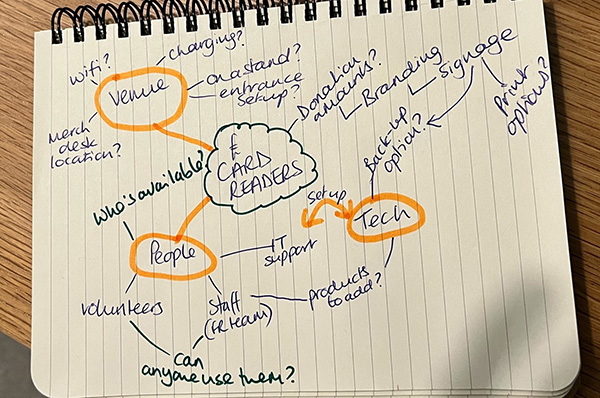Here’s a scenario we hear regularly from participants on our training programmes, and we think many people will identify: Your big or complex task keeps getting moved from one to-do list to the next without making progress on it. It stays put for days, maybe weeks, perhaps haunting you in the back of your mind whilst urgent and busy tasks take over. Then WHAM, it’s suddenly urgent as well as important and you have minimal time to work on it. We call these big tasks ‘Pyramids’. Just like a monumental pyramid – the closer you are to it, the larger it seems. These tasks are one of the most common things people procrastinate about.
To help you avoid the procrastination trap, here are two practical steps to help you get your Pyramid tasks moving:
Pyramids are made up of lots and lots of blocks. To get a grip on them, don’t try to do the whole thing. Instead, focus on those individual blocks. What are the specific activities that you need to do to get your Big Thing done? List them. If you are not sure, try asking: What could a useful step be? What could I look into? Who could I ask? What examples could I look to learn from? These are ‘momentum tasks’ and will help get you going. Crucially, it doesn’t matter if they are a logical first step, just so long as they are a step you can take. You don’t have to start a report by writing the first sentence. You can start at the end, the middle, with an image, or anywhere else. The key here is only listing tasks that are small, specific and quick. It is helpful to add a time limit to each of these tasks, focussing on what you could do in a 5 to 15 minute window.
For example:
You’re a fundraising manager for a community charity with a team of 8 staff and 15 volunteers. Your Pyramid Task is to ensure you can take card payments to accept donations at an event next month. This is a new process for you and your team. You have ordered some new card readers and now feel stuck.
Some momentum tasks might be:
If you find this activity challenging in itself, start by asking: what decisions need to be made? Thinking about who/what/where/when/how will help you create a list. Here is another example:
You are an HR Business Partner and you have been asked to take on the Learning Plan for the organisation. You haven’t done this before but you are excited to take on a new challenge. Thinking about our HR Business Partner above, what decisions need to be made for their Pyramid?
Another way of getting those small tasks out of the big one is to use a mind map. If you have a preference for working visually this option can be a great way of gaining momentum and identifying tasks, questions and connections. For example:
Set a deadline and publish it – so others in your team or organisation can see it too. This will hold you accountable, and also provides an insight for others into what your priorities are. Another benefit is that this will show what your capacity is for other things.
Take all the momentum tasks you have identified and schedule time in to do them in your calendar. Cluster them if that works for you, just make sure you define which ones you intend to do in the period. Add in time for the bigger tasks that require more than 15 minutes. Can you break these down in any way? Consider if you need to meet with others – when are they available and how soon in the timeline do you need to meet them? Bear in mind that working on your momentum tasks may well result in new tasks being created. This is great – having more tasks helps you further break down your Pyramid. Allowing buffer time is a good idea when you’re working like this. As you get closer to your deadline, you can define how you’ll spend that buffer time.
Breaking your Pyramid into smaller tasks, and gaining momentum on these will give you the confidence to keep going with it. The key to making this work is don’t delay. The sooner you start, the sooner you’ll know if you need help. And consider this: the help you ask for might end up being the catalyst in getting the task done.
If you’d like to explore this and other techniques to help you or your team manage your work load effectively, take a look at our Time Management and Managing Multiple Priorities training programme.